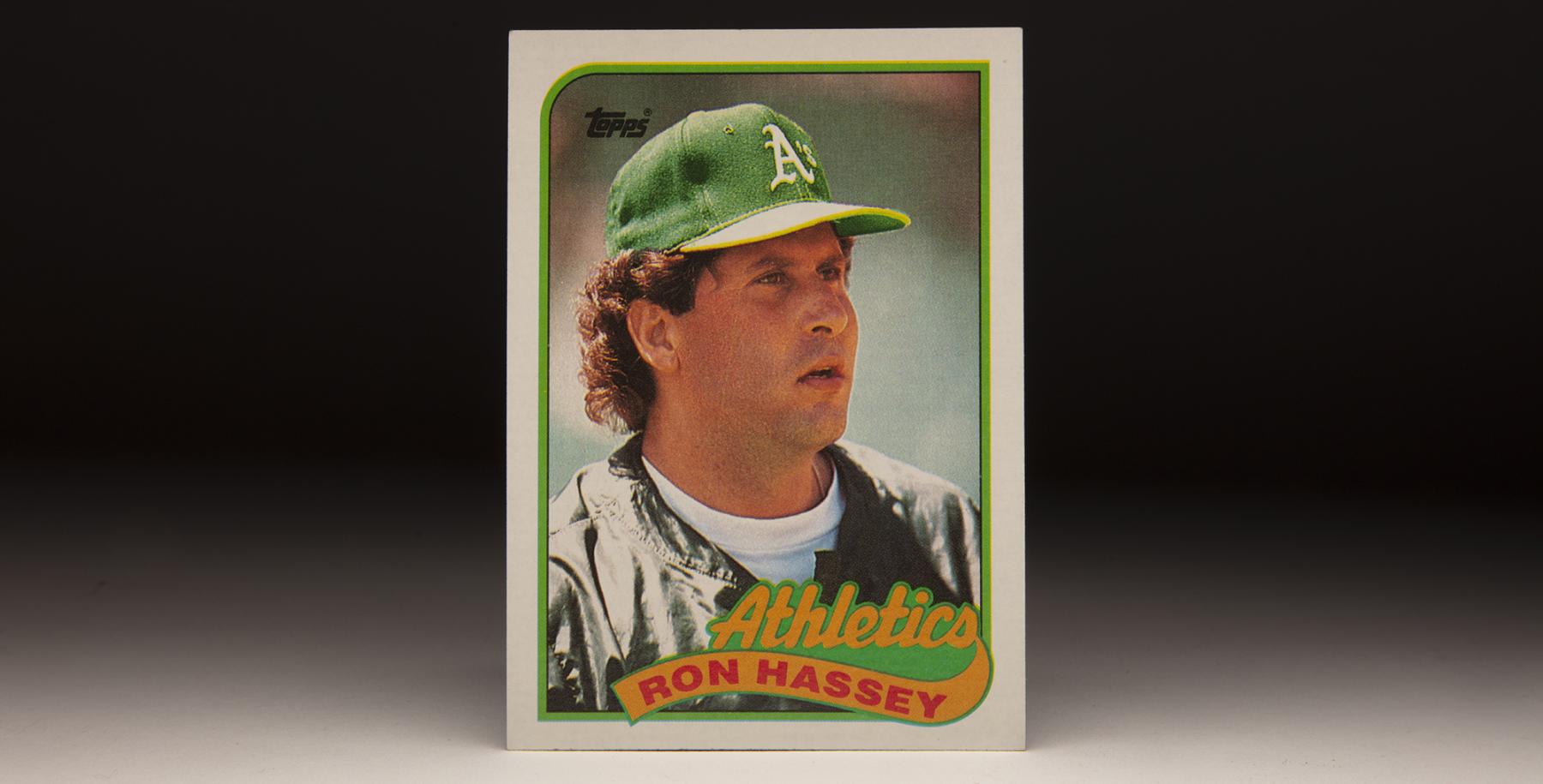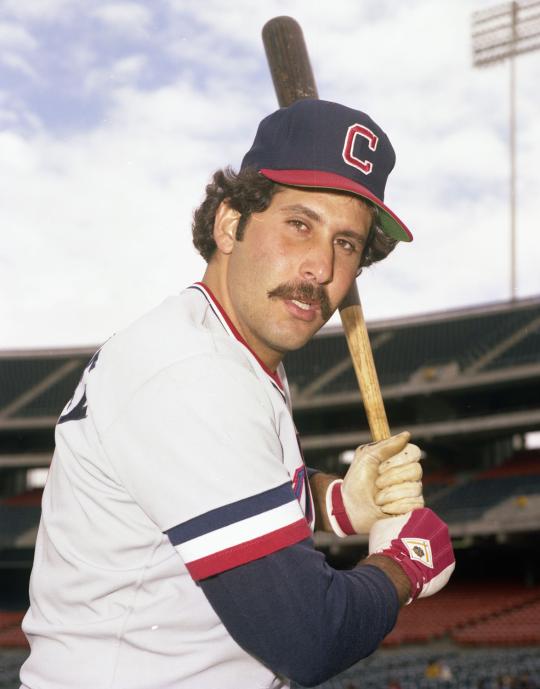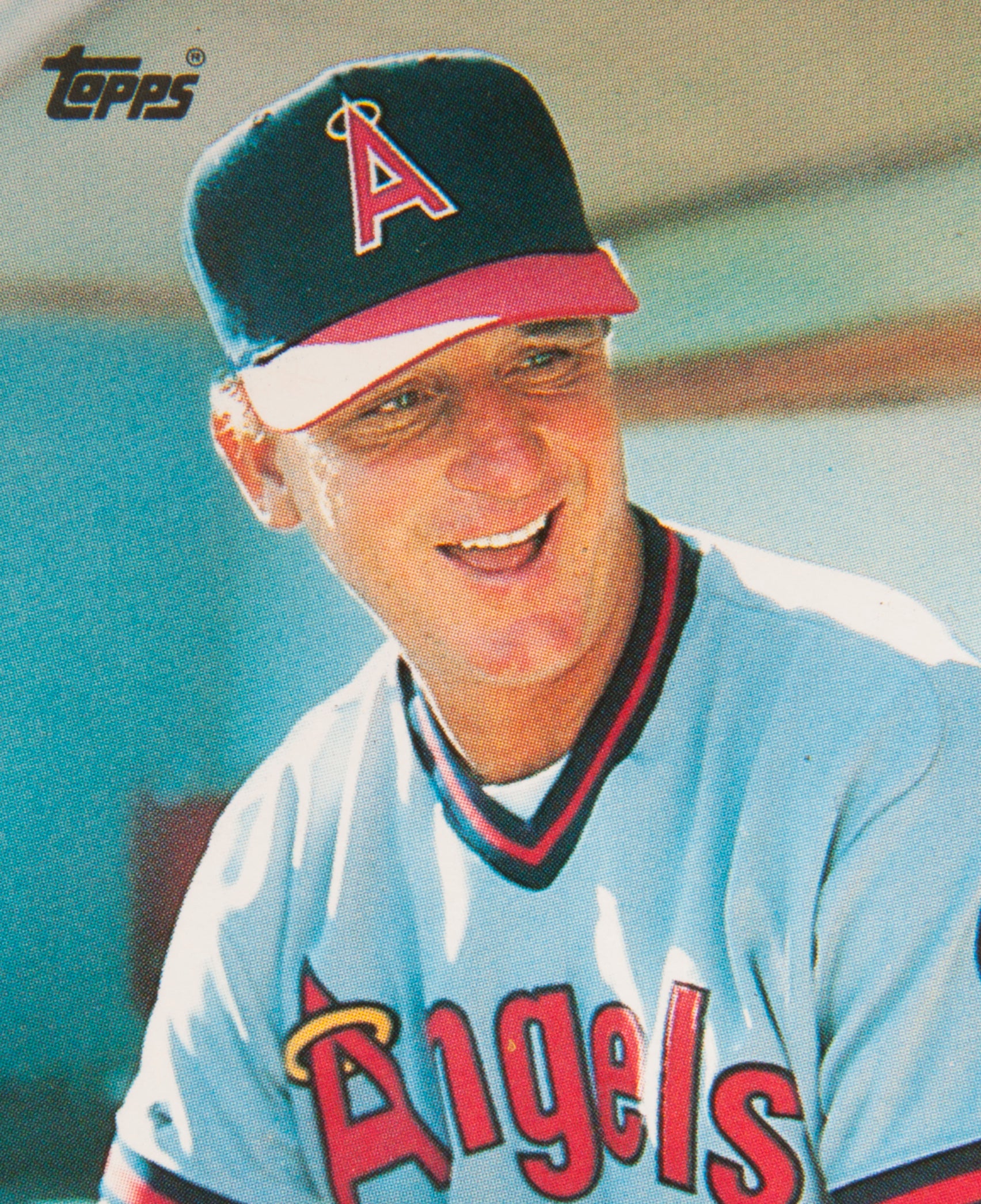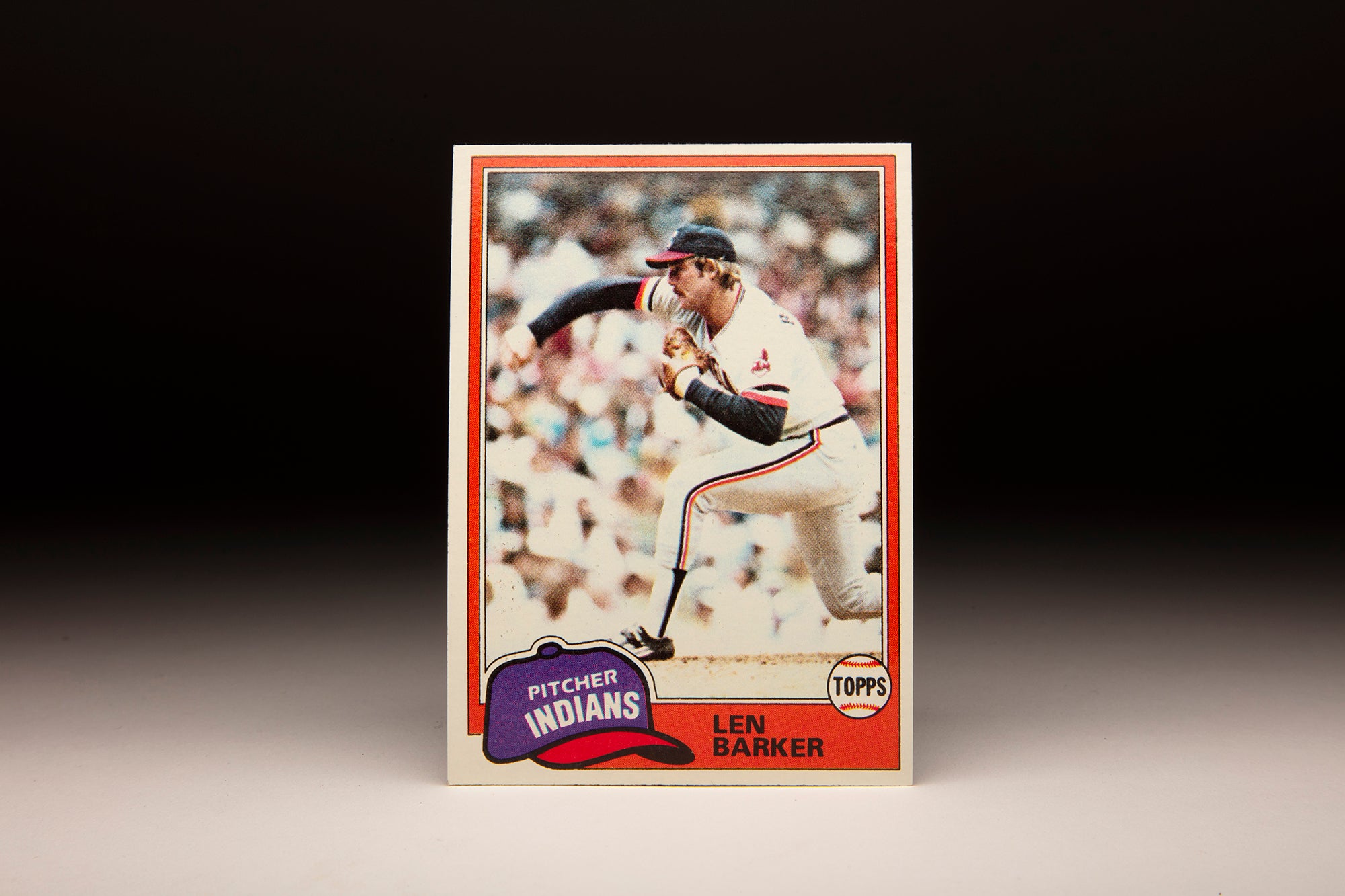- Home
- Our Stories
- #CardCorner: 1989 Topps Ron Hassey
#CardCorner: 1989 Topps Ron Hassey
They are one of a breed of baseball unicorns – creatures so rare that general managers spend fruitless hours looking for the possibility that one might be found.
Catcher, lefty swinging. Can hit .300.
Since the end of World War II, seven of those catchers – who have played have played in at least 100 games in corresponding seasons – have had at least two years like this.
Ron Hassey is one of them.
Official Hall of Fame Merchandise
Hall of Fame Members receive 10% off and FREE standard shipping on all Hall of Fame online store purchases.
Hall of Fame Membership
There is no simpler, and more essential, way to demonstrate your support than to sign on as a Museum Member.
Hassey played in the big leagues for 14 years, establishing himself in 1980 with the Indians by hitting .318 in 130 games. From that point on, Hassey became a valuable commodity – so in demand that he was traded five times in a 25-month span from June 1984 to July 1986. In that time, the Yankees and White Sox executed three deals where Hassey was one of the principal players.
Born Feb. 27, 1953, in Tucson, Ariz., Hassey was a pitcher and shortstop in high school and led his team to a state championship. He was selected by the Cincinnati Reds in the 23rd round of the 1972 MLB Draft but opted to enroll at the University of Arizona in his hometown – following in the footsteps of his father Bill Hassey, who was a star for the Wildcats and later played in the minors.
As a third baseman, Hassey blistered collegiate pitching. He helped the Wildcats go 58-6 as a sophomore third baseman in 1974, earning All-American honors while hitting .421 and setting a school record with 86 RBI. After hitting .330 as a junior, Hassey was selected by the Royals in the 22nd round of the 1975 MLB Draft but chose to return for his senior season after the Royals indicated they were planning to move him to catcher. Hassey decided to work on the switch at the college level during his senior season.
“When I was at third base, you couldn’t say much,” Hassey told the Tucson Citizen. “Now I have to keep things going, talk to the pitchers, call for the pitches, make sure everybody knows what’s going on.
“I think (big league scouts) know I can play third base. Now if I show that I can (play catcher) too, then that will just help me more. There aren’t too many catchers who can hit left-handed.”
Hassey and the Wildcats rolled through the 1976 regular season and into the College World Series. In a win over Oklahoma, Hassey tied a 27-year-old College World Series record with five consecutive hits in a 10-2 victory. Arizona, ranked No. 2 in the nation heading into play in Omaha, went on to win the national title.
Hassey was again named an All-American after hitting .332 and finished his career with a school record 234 RBI. He was then taken in the 18th round of the 1976 MLB Draft by the Cleveland Indians.
After hitting .292 in 43 combined games with Class A San Jose and Double-A Williamsport in 1976, Hassey earned an invitation to the Indians Spring Training camp – located in his hometown of Tucson.
“I don’t think I have any kind of chance at all of making the big club,” Hassey told the Tucson Citizen. “I hope I can make the Toledo team and see how I handle Triple-A ball.”
Hassey earned the starting job with Toledo, hitting .296 with 10 homers and 57 RBI in 129 games. He returned to Triple-A – this time with the Indians’ outpost relocated to Portland – to start the 1978 season, but was not there long.
Hassey debuted in the big leagues on April 23, 1978, ahead of schedule when Indians catcher Bo Díaz broke his ankle trying to break up a double play in a game against the Royals eight days earlier. He recorded his first major league hit against future Hall of Famer Dennis Eckersley.
“I was sorry to see it happen to Bo,” Hassey told the Arizona Daily Star. “But I was pleased to get called up. I feel it’s an opportunity for me. I’m going to try and do my best, show them I can catch.”
But after about two months – where he hit .203 in 25 games – the Indians returned Hassey to Portland – where he hit .323 with 12 homers and 52 RBI in 72 games that season.
After appearing in the Indians third game of the 1979 season, Hassey, stuck in a backlog of catchers in the Indians system, was again sent to Triple-A. Playing for Tacoma – the Indians’ third Triple-A location in three years – Hassey hit .338 in 44 games before returning to Cleveland in June, where he quickly took over as Cleveland’s regular catcher.
After hitting .287 in 75 games, Hassey solidified his grip on the starting job. Then in 1980, he gained national attention while hitting .318 with eight homers and 65 RBI in 130 games. His batting average would have ranked No. 9 in the AL if he had compiled enough plate appearances (falling 55 short) to qualify for the batting title and was the best among all big league catchers.
Hassey slumped to .232 in 1981 in a disjointed season interrupted by the strike, but was a part of history on May 15 when he caught Len Barker’s perfect game – just the eighth perfecto in the modern (post 1900) era. Hassey drove in the game’s second run in the first inning, giving the Indians a 2-0 advantage on the way to a 3-0 victory over the Blue Jays.
“(Barker’s) curveball was awesome,” Indians pitching coach Dave Duncan told the Associated Press. “He and catcher Ron Hassey both recognized that very early.”
Hassey wound up calling for 60 curveballs of the 103 pitches Barker threw, with 45 for strikes.
Following the 1981 season – a year where Hassey led the AL by throwing out 56 percent of the runners who attempted to steal – the Indians traded Díaz, who had platooned with Hassey that year and earned an All-Star Game berth, to the Phillies. Hassey still faced a platoon in 1982, however, this time with switch-hitting Chris Bando.
“I do think you need two catchers,” Hassey told the AP. “But I don’t believe you can platoon the two catchers through a whole season and win. The position’s too important to switch guys in and out.”
Hassey hit .251 with a .356 on-base percentage in 113 games in 1982 and followed that with a .270 batting average in 113 games in 1983. Now approaching free agency, Hassey signed a three-year, $1.5 million contract with the Indians prior to the 1984 season.
But on June 13, 1984, Hassey was involved in a blockbuster deal that changed the direction of the National League East race. The Indians sent Hassey, Rick Sutcliffe and George Frazier to the Cubs in exchange for Joe Carter, Mel Hall, Don Schulze and Darryl Banks. Sutcliffe would win 16 of his 17 decisions with Chicago, earning the NL Cy Young Award and pushing Chicago to its first postseason appearance in 39 years.
But with Jody Davis having an All-Star season for the Cubs, Hassey had difficulty finding playing time in Chicago. He started at first base on July 4 against the Padres, but suffered a left knee injury stretching for a throw in the eighth inning and had to be taken off the field on a stretcher and later had surgery to repair the damage.
He did not appear in another game until Sept. 5 and started only two contests – both at first base – the rest of the season. He hit .333 with two homers and five RBI in 19 games with the Cubs that year, but asked for a trade following the season and was dealt to the Yankees on Dec. 4 with Porfi Altamirano, Rich Bordi and Henry Cotto in exchange for Brian Dayett and Ray Fontenot.
“We’ve been after Hassey for a number of years,” said Yankees general manager Clyde King. “We couldn’t pass him up this time.”
Thus began Hassey’s three-season saga with the Yankees and White Sox. In 92 games with the Yankees in 1985, Hassey hit .296 with 13 homers and 42 RBI while sharing the job with Butch Wynegar. The Yankees then traded Hassey and Joe Cowley to Chicago on Dec. 12 in exchange for Britt Burns and two minor leaguers.
Two months later, on Feb. 13, 1986, the Yankees reacquired Hassey in a deal that sent – among others – Neil Allen to the White Sox.
“I’m not real sure what the White Sox are doing,” Hassey told the Journal News in White Plains, N.Y. “What’s nice is that I’m coming back to a team that I did real well with last year.”
But the reunion did not last long. After hitting .298 in 64 games to start the 1986 season, Hassey was sent to the White Sox on July 30 along with Carlos Martínez in a deal that brought Ron Kittle, Joel Skinner and Wayne Tolleson to New York.
“I hate to lose (Hassey),” Yankees manager Lou Piniella told the Hartford Courant. “He’s done everything I’ve asked of him. He’s a good person and a good player to have on a team.”
Hassey went on a tear after the trade, hitting .353 in 49 games with the White Sox to finish the season with a .323 batting average, a .406 on-base percentage, nine home runs and 49 RBI. But following knee injuries in 1987 that limited him to a .214 average in 49 games, Hassey became a free agent when the White Sox declined to pick up the option year on his contract.
Speculation abounded that Hassey would return to the Yankees, whose manager – Billy Martin – was a Hassey fan. But on Dec. 9, 1987, Hassey signed with the Athletics, joining a team that was about to embark on a mini dynasty.
Hassey and Terry Steinbach shared the catching duties in 1988, with the 35-year-old Hassey hitting .257 with seven homers and 45 RBI in 107 games as the A’s won the AL pennant. The Athletics entered the World Series against the Dodgers as heavy favorites, but Kirk Gibson’s two-run, two-out home run against Eckersley in the ninth inning of Game 1 – with Hassey behind the plate after entering the game in the bottom of the ninth – propelled the Dodgers to what became a five-game series victory.
Oakland returned to the World Series in 1989 as Hassey hit .228 in 93 games in the regular season, and he became known for being Bob Welch’s personal catcher.
“This time, we’re more prepared,” Hassey told the Arizona Daily Star as the World Series began.
Steinbach, however, caught every inning of the A’s four-game sweep of the Giants as Dave Stewart and Mike Moore started two games apiece in a World Series that was delayed 11 days after Game 2 following a major earthquake in the Bay area. But while he didn’t appear in a World Series game that year, Hassey finally got his ring.
Hassey split time with Steinbach for the third straight season in 1990 as Oakland again advanced to the World Series. After hitting .213 in 94 games in the regular season, Hassey hit .333 five combined games in the ALCS and the World Series – with the A’s defeating the Red Sox for the pennant before losing to the Reds in the Fall Classic.
Hassey’s contract expired after the World Series, and he signed on with the Expos on Feb. 15, 1991. He was behind the plate on July 28 when Montreal teammate Dennis Martínez pitched a perfect game against the Dodgers, making Hassey the first catcher ever to work two perfect games.
“You give the credit to Dennis,” Hassey told the Associated Press. “He’s the guy who had to throw the pitches. I’m just the guy who’s catching them and helping him.”
Hassey hit .227 in 52 games that season, then called it a career. After scouting for the Yankees in 1992, Hassey coached for the Rockies from 1993-95 and the Cardinals in 1996. After a stint scouting for the Diamondbacks, Hassey returned to coaching on Mike Hargrove’s Mariners staff from 2005-06 – reuniting with his former Indians teammate.
In 14 big league seasons, Hassey hit .266 with 172 doubles, 71 home runs and 438 RBI. And despite playing the game’s most grueling position, his skill with the bat never waned.
“I’ve never been worried about my hitting,” Hassey said during his first Spring Training with the Indians. “And I’m not worried now.”
Craig Muder is the director of communications for the National Baseball Hall of Fame and Museum









